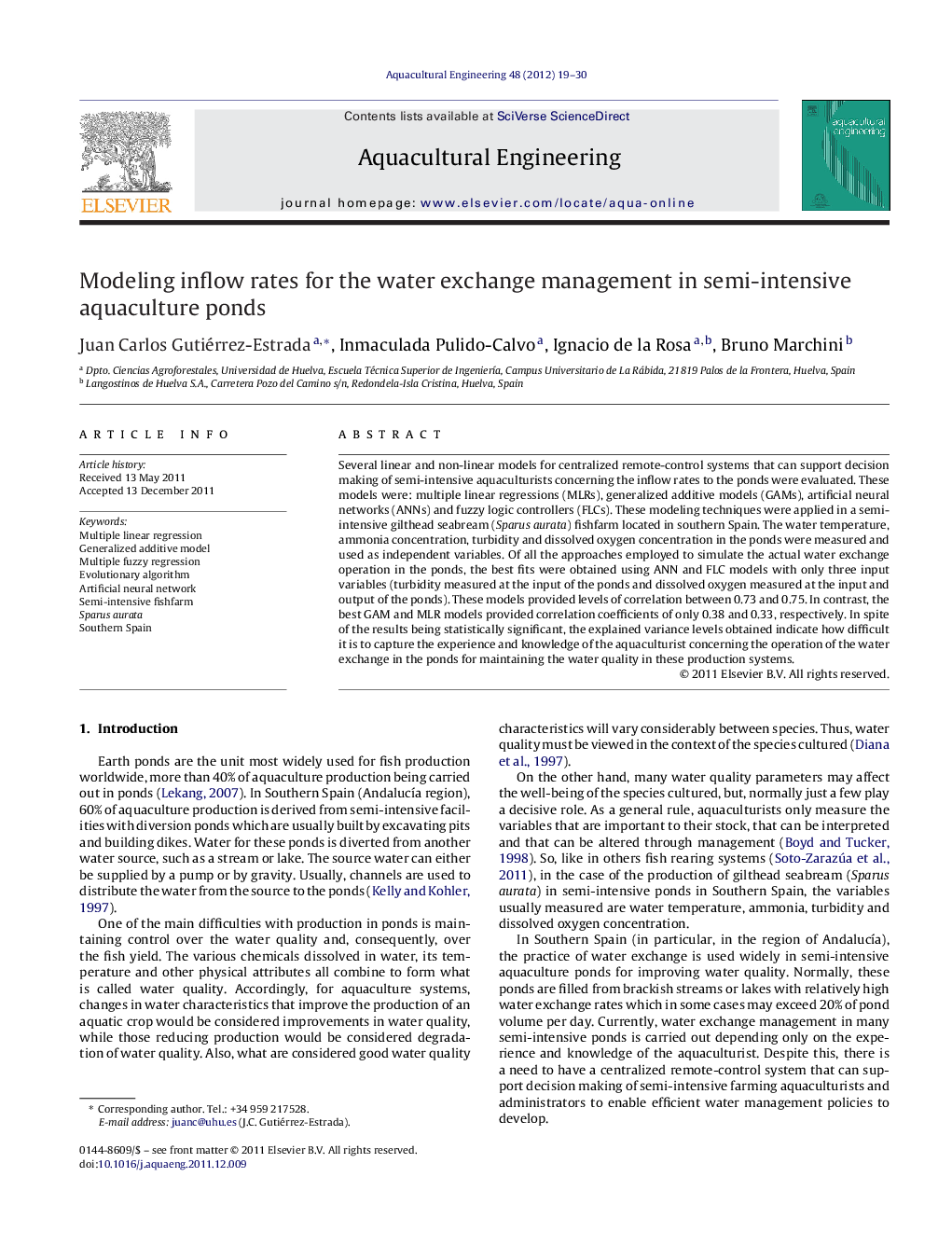| Article ID | Journal | Published Year | Pages | File Type |
|---|---|---|---|---|
| 4527284 | Aquacultural Engineering | 2012 | 12 Pages |
Several linear and non-linear models for centralized remote-control systems that can support decision making of semi-intensive aquaculturists concerning the inflow rates to the ponds were evaluated. These models were: multiple linear regressions (MLRs), generalized additive models (GAMs), artificial neural networks (ANNs) and fuzzy logic controllers (FLCs). These modeling techniques were applied in a semi-intensive gilthead seabream (Sparus aurata) fishfarm located in southern Spain. The water temperature, ammonia concentration, turbidity and dissolved oxygen concentration in the ponds were measured and used as independent variables. Of all the approaches employed to simulate the actual water exchange operation in the ponds, the best fits were obtained using ANN and FLC models with only three input variables (turbidity measured at the input of the ponds and dissolved oxygen measured at the input and output of the ponds). These models provided levels of correlation between 0.73 and 0.75. In contrast, the best GAM and MLR models provided correlation coefficients of only 0.38 and 0.33, respectively. In spite of the results being statistically significant, the explained variance levels obtained indicate how difficult it is to capture the experience and knowledge of the aquaculturist concerning the operation of the water exchange in the ponds for maintaining the water quality in these production systems.
► We model the inflow rates to semi-intensive aquaculture ponds. ► We evaluated two classical and two heuristic modeling techniques. ► Heuristic models provided the best fits using turbidity and dissolved oxygen as input variables. ► These models proved to be useful tools for the development of policies on water exchange management.
